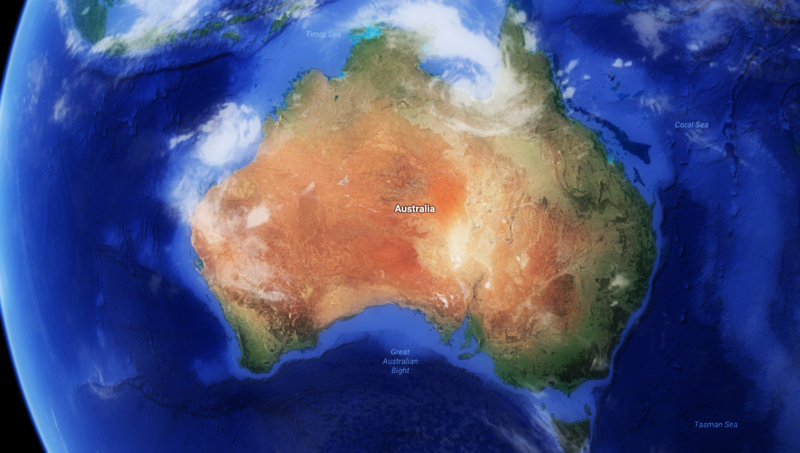Many thanks to SWLing Post contributor, Nigel Holmes–formerly of Radio Australia–for the following update regarding Nick Xenophon’s bill to resume ABC shortwave services:
Last Friday I travelled to Canberra and fronted the Senate Committee hearing testimony on the matter of HF broadcasting & Senator Xenophon’s Bill to compel ABC to resume HF domestically & for RA. I was grilled like a breakfast kipper. It went well.
Another witness was Graeme Dobell, a legendary radio & print journalist who has travelled & worked all over the Pacific region. Graeme has written some good articles on the current subject. See here:
https://www.aspistrategist.org.au/abc-gets-wrong-south-pacific-service/ and here
https://www.aspistrategist.org.au/smart-stuff-shortwave-south-pacific/
Interestingly another ex-RA journalist & RA senior executive Geoff Heriot wrote a recent piece critical of ABCs degradation of RA specialist programming. See here:
The crowded Pacific: re-considering the sharp edge of broadcasting’s soft power
Thank you, Nigel. We appreciate your updates and are certainly thankful that you have been representing the interests of those who believe in ABC maintaining a presence on shortwave.


Unless those those against the cut can show how many people were listening it isn’t going to happen. The ABC provided the the chair of the hearing figures for both RA and the NT service. And it’s only a handful.
Interesting to note that the Australian Maritime Safety Authority in Australia operate and maintain (through Kordia) an HF network for maritime communications from two remote sites in the Australian outback. Whilst not a broadcast service, if we took the ABC argument that “nobody is listening to SW” then why do AMSA maintain the HF network when satellite phones would be used more (international safety obligations is the answer).
RA won’t return in it’s previous format (the sale of the Shepparton TX site seals that) but a form may return via the NT service (unless they have sold that as well?)
Here’s the link to the transcript of this committe hearing:
http://parlinfo.aph.gov.au/parlInfo/search/display/display.w3p;query=Id%3A%22committees%2Fcommsen%2Fc4bc7d5c-0c8a-4b84-853f-2fa5e9e700fc%2F0000%22
You can also download a fully formatted PDF of the transcript at that link for easy reading, here’s the direct link to that:
http://parlinfo.aph.gov.au/parlInfo/download/committees/commsen/c4bc7d5c-0c8a-4b84-853f-2fa5e9e700fc/toc_pdf/Environment%20and%20Communications%20Legislation%20Committee_2017_06_16_5193.pdf;fileType=application%2Fpdf#search=%22committees/commsen/c4bc7d5c-0c8a-4b84-853f-2fa5e9e700fc/0000%22
I hate to tell you this but trying to get Australia (or anybody else for that matter) back on shortwave is pretty hopeless. Shortwave stations are not run by radio enthousiasts but by polititians and beancounters. Once it has been discovered that the audience is using their smartphones, there will be no stopping scrapping shortwave. In addition, many transmitters are becoming antiques….
I agree that the RA service is probably gone forever, and for exactly those (perceived) reasons – but the domestic SW NT services have no equivalent options. Let’s hope those can still be revived, though it looks unlikely.
Many of the submissions seem to be more interested in pushing DRM as a replacement than anything else. Regardless of what you think of DRM, it’s not actually a solution…
There are multiple companies selling modern shortwave transmitters worldwide. There are hybrid AM-DRM models for example.
Shortwave transmitters are still being made.
All India Radio is rolling out DRM across india with 2 shortwave transmitters and 35 medium wave transmitters
http://www.radioworld.com/global/0007/drm-digital-radio-comes-of-age/339666
For the top end of Australia, shortwave is particularly essential due to huge distances between towns, massive cattle stations, fishing boats out to sea, the threat of cyclones on the coast and bushfires inland that can take out FM transmitters. Lenghty power outages due to natural disasters aren’t an issue with SW either, since the SW transmitter can be in a location where electricity security is guaranteed.
Even in Southern Australia I’ve been to many rural locations where shortwave signals are much stronger than medium wave, especially during the day.